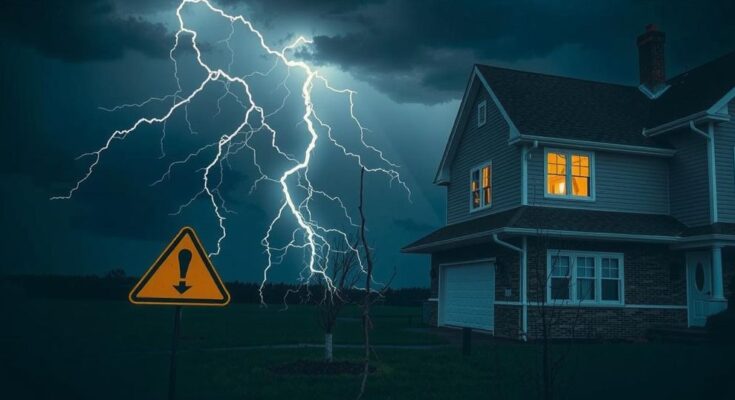The article discusses the rising dangers posed by hurricanes, particularly following Hurricane Helene, as NOAA forecasts a record number of storms this season. Expert Isaac Ginis emphasizes the impact of climate change on storm intensity, urging families to prepare effectively for safety. The article provides guidance on necessary preparations and highlights resources for disaster readiness.
Prepare for Impact: Ensuring Family Safety During Storms As the aftermath of Hurricane Helene continues to unfold with rising fatalities and damage assessments, the threat of new storms is looming in the Atlantic. Experts are cautioning that the frequency and intensity of such storms may become commonplace due to unprecedented ocean temperatures in recent history. The National Oceanic and Atmospheric Administration (NOAA) has predicted the occurrence of up to 24 named storms this hurricane season, with an alarming expectation that about seven of these could escalate to major hurricanes. Thus far, there have been eight named storms recorded, and with two months of hurricane season remaining, authorities emphasize the importance of preparation to safeguard families. This July, Hurricane Beryl set a record as the earliest Category 5 hurricane in the Atlantic, prompting concerns regarding future storms as climate change continues to exacerbate ocean warming. University of Rhode Island oceanographer Isaac Ginis highlighted the long-term implications of continuous carbon dioxide emissions, stating, “Even if we stop emitting carbon dioxide today, it will take 10, 15 years for the climate to get back, back to normal.” He further elaborated that persistent emissions could result in centuries of rising global temperatures. To combat these challenges, meteorologists are employing advanced technology for the development of enhanced forecasts that offer improved accuracy regarding storm intensity. Ginis cautions that the threat extends beyond the highest-rated hurricanes; lower category storms can result in catastrophic flooding, with even six inches of water capable of toppling an adult. He emphasized the grave dangers of flooding, asserting that “two feet of moving water can essentially sweep away a vehicle.” To ensure the safety of families, Ginis recommends proactive measures including thorough preparation prior to the storm, remaining indoors during the storm, and having adequate supplies post-storm. He stated, “There’s no reason and justification to die during the storm these days. They just need to heed the warning and listen to the forecasters.” The hurricane season remains active until November 30th, and it is imperative for families to familiarize themselves with preparation strategies to mitigate risks. Reliable resources such as the website http://www.ready.gov/ provide vital tips for securing homes and businesses against potential storm impacts. Additionally, the FEMA app serves as a personalized disaster management tool to empower individuals during natural disasters.
The context surrounding hurricane threats emphasizes the increasing severity and frequency of storms, significantly attributed to climate change and warming ocean temperatures. With NOAA forecasting a higher than usual number of named storms, communities must prioritize safety and preparedness to combat these natural disasters. Enhanced meteorological technology plays a crucial role in assessing storm conditions and predicting potential hazards, allowing families to implement effective safety protocols before, during, and after such events.
In conclusion, as hurricane season progresses, the data points towards an increase in the occurrence of severe storms, demanding that individuals stay informed and prepared. By understanding the risks and heeding warnings from experts, families can significantly minimize their vulnerability to the destructive impacts of hurricanes. It is essential to engage with authoritative resources to ensure adequate preparation and response strategies for potential storms ahead.
Original Source: www.walb.com




